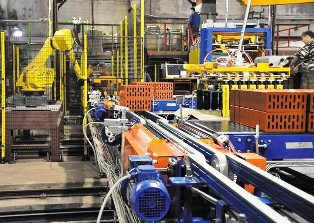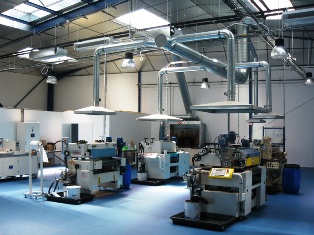How to improve power factor without compensating capacitors
Reactive power compensation can significantly save fuel and energy resources and money. It is determined by the readings of the reactive counters. Active power, kW, characterizes the intensity of conversion of electrical energy into thermal, mechanical, light, etc. Reactive power, kvar, characterizes the intensity of energy exchange between the generator and the consumer; electrical energy in this case is not converted.
A noticeable excess of reactive power over active power is characteristic of industrial facilities of industrial enterprises. It is known that energy losses are proportional to the square of the total current. Reactive loads cause significant energy losses. In order to increase the efficiency of the power supply of the enterprise and its workshops, to improve the quality of voltage and to increase the productivity of electrified equipment, it is necessary to reduce these loads.
The reduction of reactive loads under operational conditions is achieved as a result of organizational and technical measures, primarily the use of compensating devices.
In case of insufficient compensation, the passage of reactive loads along power lines and through transformers leads to a decrease in their throughput, energy losses and voltage in all elements of the supply chain. The consequence of this is an increased consumption of fuel and energy resources and the need for additional costs for expanding power plants, increasing the installed power of power transformers and the cross-section of wires.
In order to increase the efficiency of the power supply of industrial enterprises, it is necessary to strive to reduce the consumed reactive power to the values determined by the power system.
For increasing the power factor by improving the operation of electrical installations without the use of compensating devices, the following measures are taken:
- rationalization of the technological process of the enterprise, leading to improvement of the energy regime of the equipment;
- the use of synchronous electric motors instead of asynchronous motors of the same power, when possible according to the conditions of the technological process;
- replacement of lightly loaded asynchronous motors with motors of lower power;
- voltage drop in engines that systematically operate at low load;
- limiting idling of engines;
- replacement of lightly loaded transformers; lower power transformers.

The electric motor for the driven machine must be selected in accordance with its operating mode, taking into account the permissible overload of the motor.
In all cases, it is recommended to choose a motor with a higher rated power factor. Whenever possible, preference should be given to motors with higher rotational speeds and a squirrel-cage rotor rotating on roller bearings.
If the electric motors are already installed and the possibility of their replacement is excluded, then in order to increase the power factor, it is recommended to revise the production technology and, if possible, modernize the mechanisms. For example, if on sleepers, sawmills, trimmers, etc. the motors are not fully loaded and can be loaded with higher cutting speeds and higher feed rates for increased productivity.
It is not always advisable to replace unloaded asynchronous electric motors with motors of lower rated power. This is explained by the fact that electric motors with lower power, other parameters being equal, have a lower nominal efficiency, therefore, after the replacement, the losses in the motor may turn out to be higher than before the replacement. As calculations and experience show, at an average engine load of 45% of rated power, replacement is always recommended. If the load is in the range of 45 to 70%, then the possibility of replacement should be checked by calculation.At loads above 70%, replacement in most cases is impractical, especially since this is due to the cost of dismantling the installed electric motor and installing a machine that replaces it.
Constancy of the supplied voltage plays a noticeable role in the mode of operation of electric motors. In low-power power plants, the voltage is sometimes maintained above the nominal, which leads to an increase in the no-load current and therefore an increase in the reactive power. Therefore, to improve the power factor, it is necessary to maintain the rated voltage.
In order to increase the power factor, special attention should be paid to the quality of the repair of electric motors.
Changes in the power factor and short-circuit efficiency of an induction motor when the stator windings are connected with star and delta of the motor reduces the power factor, therefore it is necessary to ensure that the repaired motor retains: previous number of series-connected turns in phase ; the total cross-section of the phase winding, i.e. the sum of the cross-sections of the wires of all parallel branches; old air gap. If after repair it turns out that the air gap has increased by more than 15% compared to the norm, it is not recommended to use such an engine.

Significant results in increasing the natural power factor of the enterprise can be obtained with a more rational use of transformers.Since the main part of the reactive power consumed by the transformer falls on the idle power, it is recommended, if possible, to turn off the transformers during idle. Replace transformers with a load of 30% or less; in other cases, the expediency of replacing or rearranging transformers is determined by calculation. It should be noted that increasing the load factor of the transformer to 0.6 leads to a noticeable increase in the power factor, and with a further increase in the load factor from 0.6 to 1, the power factor improves slightly .
